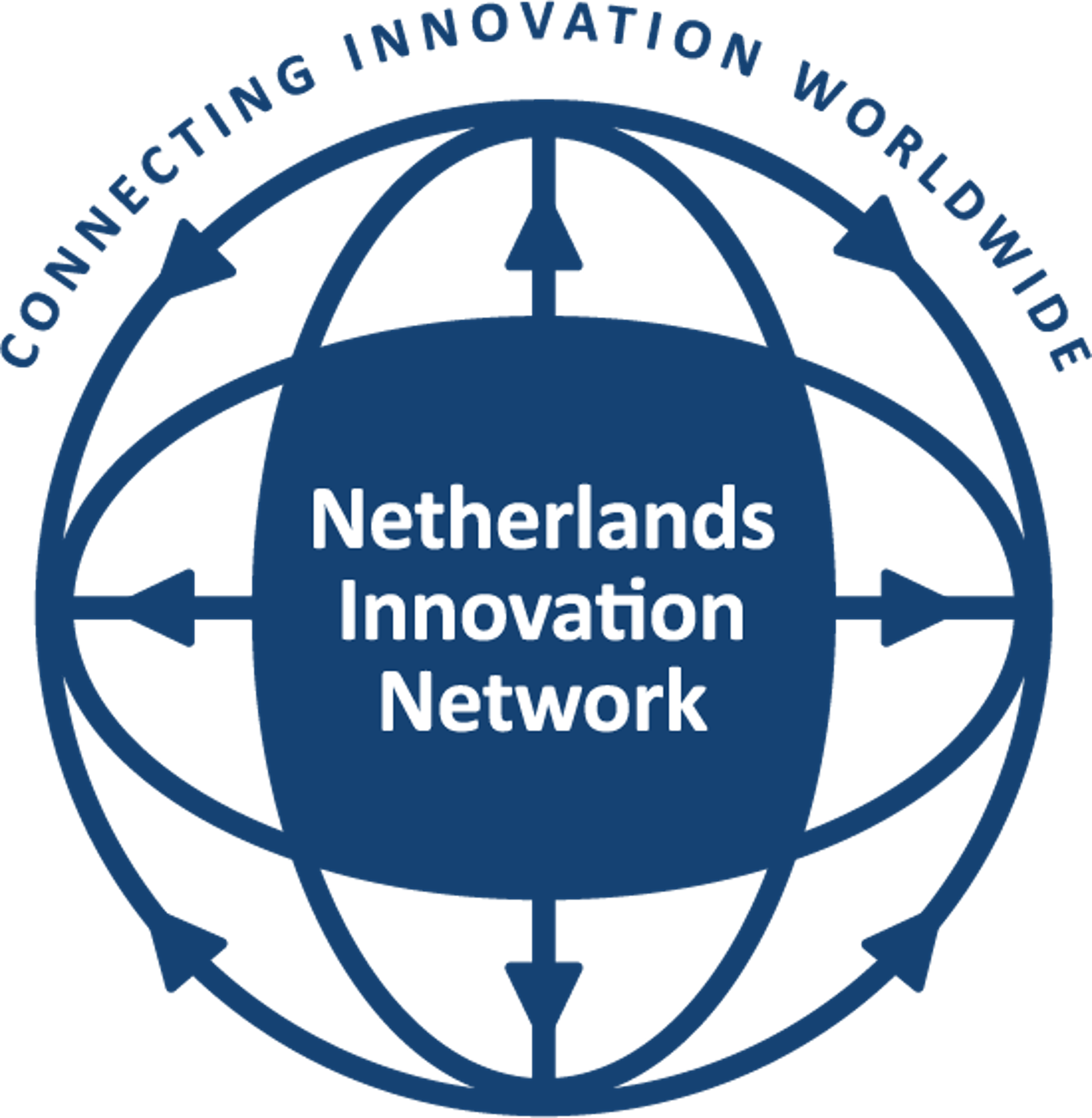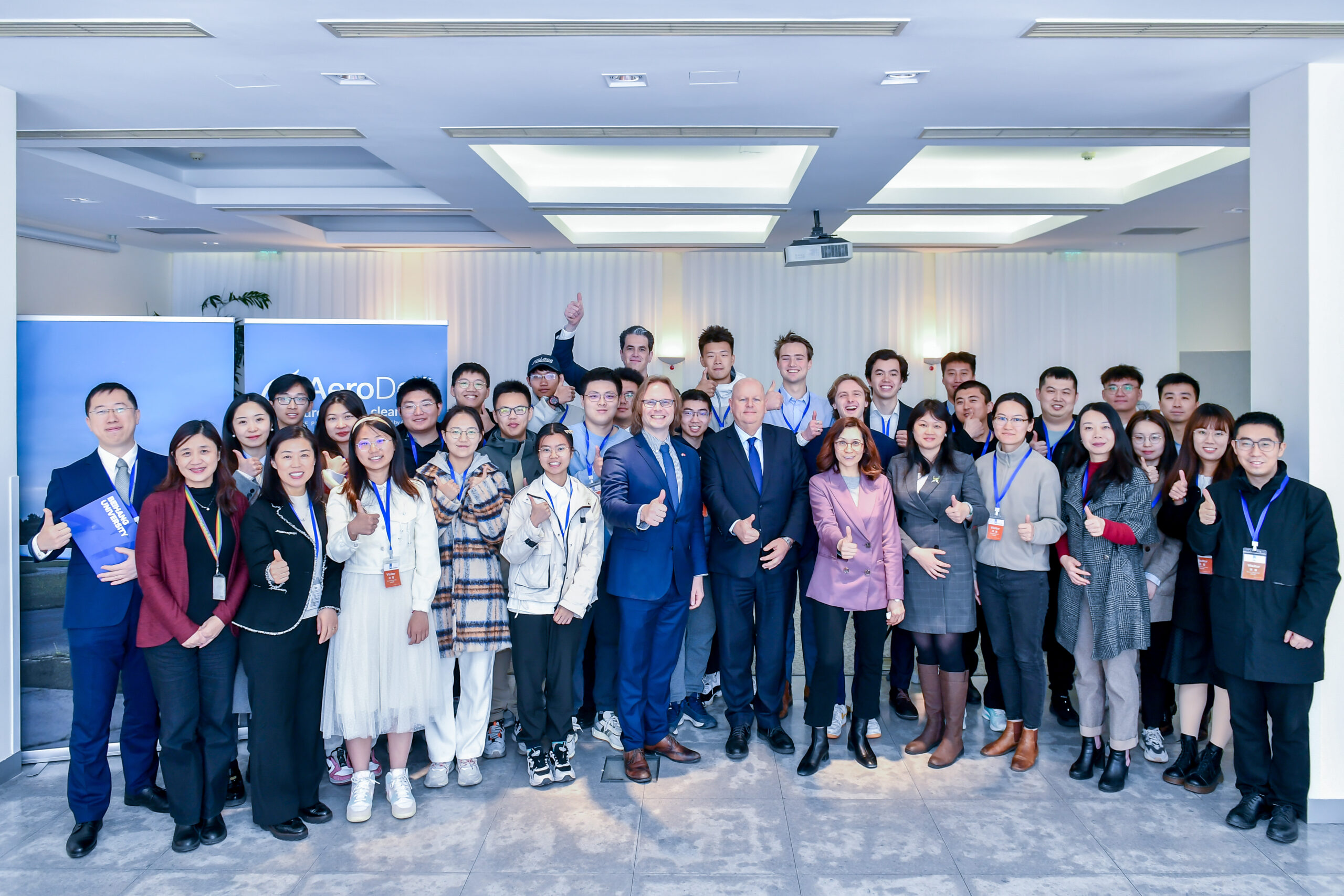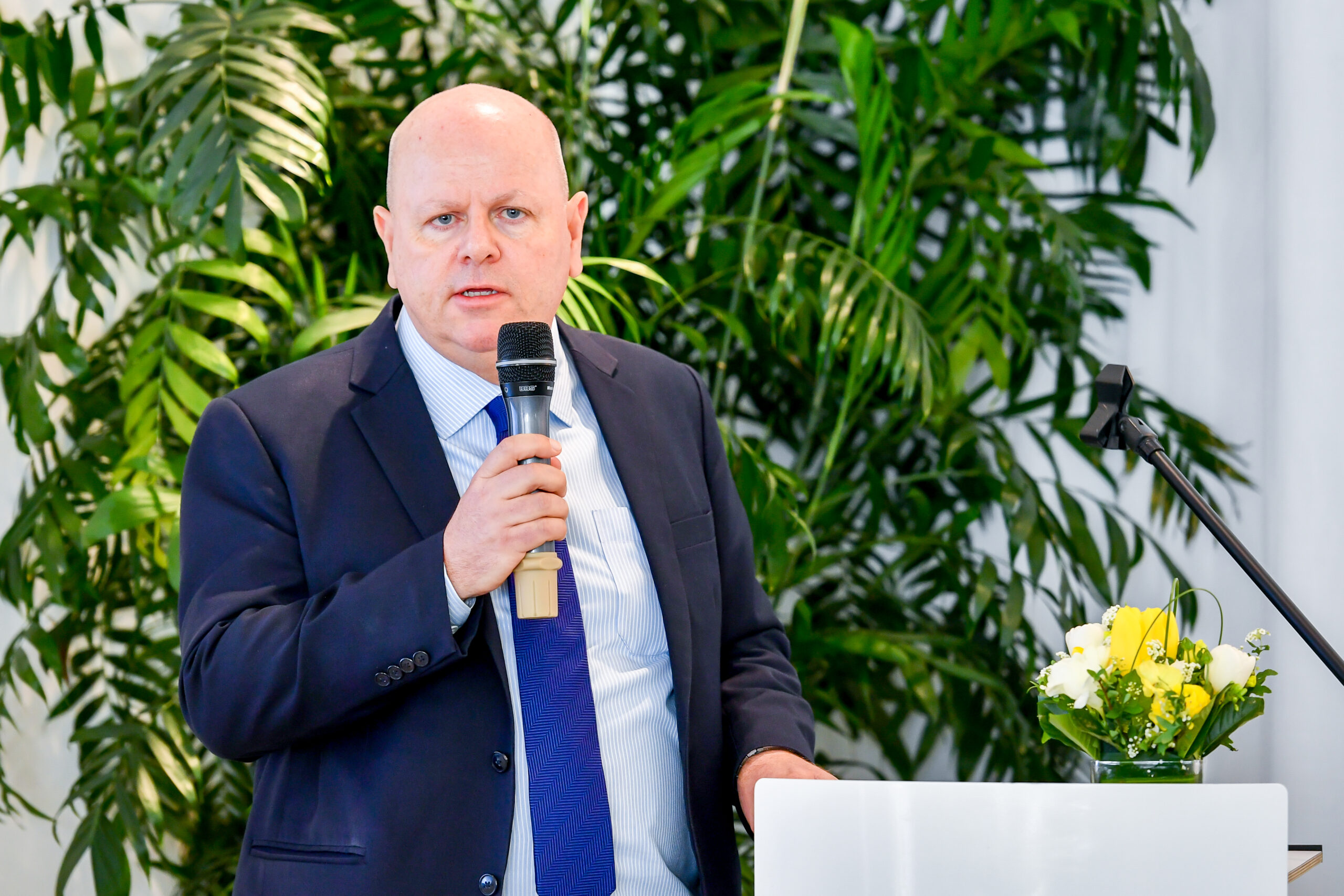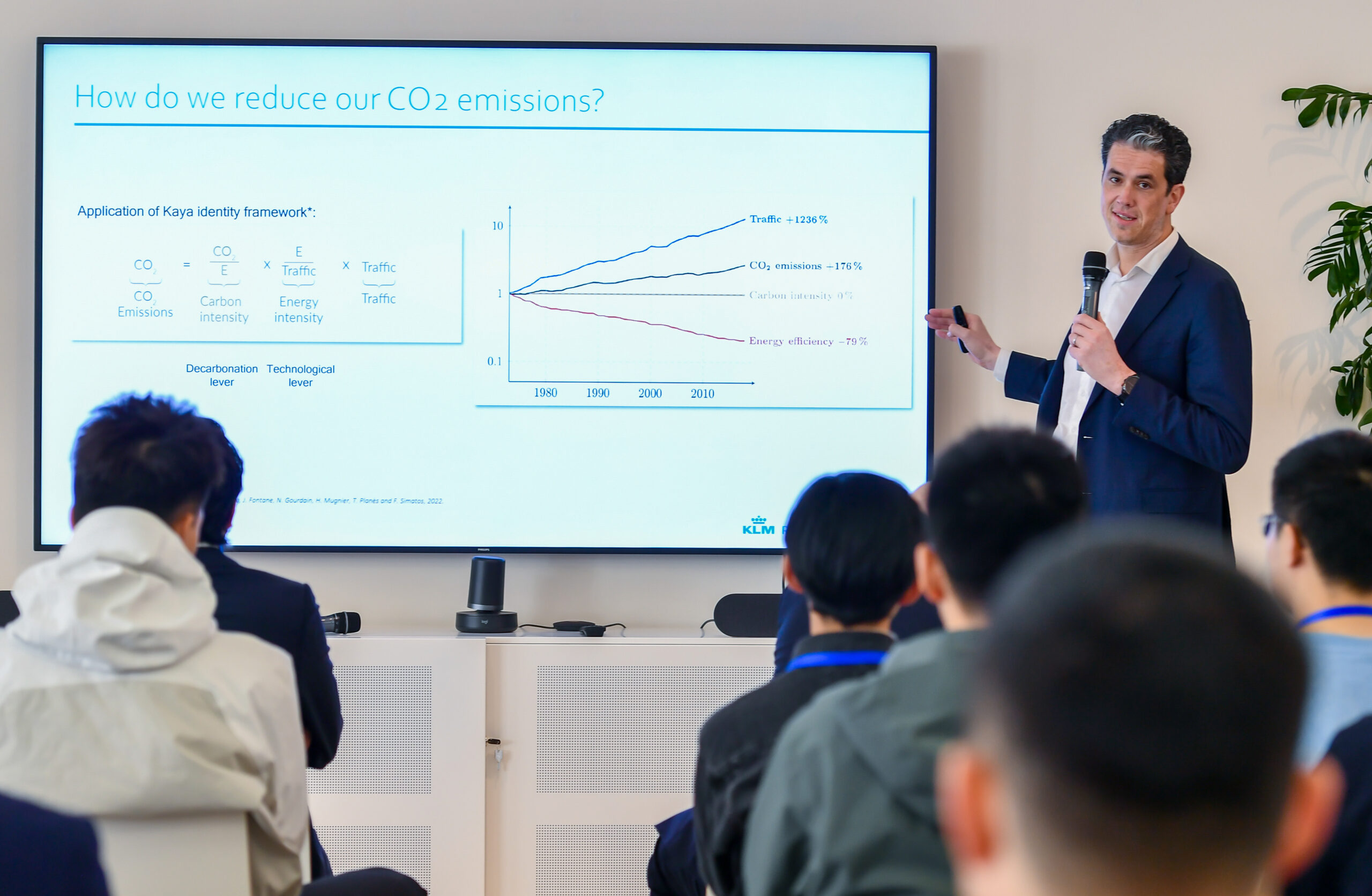Amidst the global challenge of climate change, the Netherlands and China are both looking into advance clean technologies, recognising hydrogen’s role in various sectors, including sustainable aviation, in achieving carbon neutrality. In this context, AeroDelft, a student team from Delft University of Technology, has taken on a mission to prove that emission-free aviation is within reach through the pioneering of (liquid) hydrogen-powered electric aircraft. Three members of the team, Job De Vries, Boris Van Praet and Sil Barendregt, were present in China from March 25 till April 2, for an interesting and engaging programme on green aviation, supported by the Netherlands Innovation network China.

The Netherlands and China are facing one of today’s biggest global challenges: adapting to and mitigating the effects of climate change. No country can tackle this issue alone, and it’s essential that the global community work together. The Paris Agreement, signed in 2015, stands as the broadest accord for nations to combat climate change. To successfully limit the damaging effects of the climate crisis, countries need to collaborate by setting reduction targets and by sharing knowledge, experience, and resources. This collaboration is critical for accelerating the development and adoption of clean technologies.
Hydrogen is increasingly recognized as a key player in achieving a climate-neutral economy, providing new opportunities for energy balance, seasonal storage, and the global movement of renewable energy. It has the potential to act as an alternative to natural gas, a material for producing chemicals, and a carbon-neutral fuel for transportation. Especially for transport options where electrification isn’t available, hydrogen is a promising alternative. It also enables large-scale investment in renewables, by offering a way to cope with the variable electricity supply from sources like wind and solar, and can lead to efficient electricity transport and large-scale storage solutions. In this context, AeroDelft, a student team from TU Delft, has taken on a mission to prove that emission-free aviation is within reach through the pioneering of liquid hydrogen-powered electric aircraft. Three members of the team, Job de Vries, Boris van Praet, and Sil Barendregt, were present in China at the end of March 2024 and the beginning of April, starting their journey at the 2024 Beijing International Hydrogen Technology and Equipment Exhibition. They’re showcasing their hydrogen plane to the Chinese audience with the aim to promote this clean technology and finding possible future partners.












Currently, the global aviation industry accounts for about 2.5% of global carbon emissions. According to forecasts, the global annual passenger growth rate will be about 3.7% over the next 20 years, and the scale of the aviation industry is expected to double by the middle of this century. To achieve the industry goal of net-zero emissions by 2050, multiple low-carbon technology routes are being pursued simultaneously, with hydrogen-powered aircraft being one of them.
The aviation industry’s carbon emissions primarily come from the combustion of fossil fuels, with hydrogen considered the best alternative. Hydrogen fuel is not only green and low-carbon but also has a higher energy density per unit weight than the current main aviation fuel—aviation kerosene. With the same energy provided, the weight of hydrogen fuel is only about 24% that of aviation kerosene. For aircraft striving to reduce every gram of weight, the importance of this weight reduction is self-evident.
However, although hydrogen itself is light, storing hydrogen is not an easy task.
Firstly, there’s the issue of storage volume. At room temperature and standard atmospheric pressure, hydrogen molecules exist in a gaseous form with a very small density, requiring about 2750 times the volume for the same energy as aviation kerosene. To save space, hydrogen gas is usually stored under 272 times atmospheric pressure or can be cooled to -253.87 degrees Celsius at atmospheric pressure to turn hydrogen molecules into a liquid state. In terms of system complexity, the compressed hydrogen gas solution is relatively simple to implement but requires a higher cost in terms of space and weight. Low-temperature liquid hydrogen storage, with its relatively greater density, is more realistic and feasible for future commercial flights.
Secondly, safe storage is difficult. Regardless of the storage method, the requirements for sealing are more complex than traditional fuel systems. This is because hydrogen molecules are much smaller than aviation kerosene and more likely to escape from pipeline gaps; for liquid hydrogen storage, it is also necessary to consider the problem of maintaining a constant temperature, otherwise, the hydrogen’s expansion upon warming and vaporization could cause a sudden increase in the fuel tank’s internal pressure, leading to an explosion. The space industry’s liquid hydrogen storage system is relatively simple, as hydrogen-oxygen engine rockets are only filled with low-temperature liquid hydrogen before launch and continuously vent hydrogen gas to the atmosphere to avoid pressure build-up from vaporization—the white mist ejected before rocket launches is generated in this way. Compared to the few minutes of a rocket launch, airplane flights last for several hours, necessitating more reliable storage methods.
The development of new composite materials has provided support for the hydrogen storage segment. Compared to traditional metal materials, composite materials of the same strength require less weight. For example, carbon fiber composite material fuel tanks developed by some countries have reduced the weight by 75% for the same volume compared to the most advanced aerospace low-temperature tanks.
The current mainstream power technology routes usually include three types. One is hydrogen fuel cells, which produce electrical energy through chemical reactions to generate thrust. The second is hydrogen fuel internal combustion engines, similar to traditional gasoline internal combustion engines but using liquid hydrogen as fuel. Due to the smaller volume of hydrogen gas undergoing redox reactions in the same working volume, these two schemes have a smaller power density and are more suitable for small aircraft. For larger commercial aircraft, the future choice should be similar to the current method of propulsion by turbofan engines—by igniting a larger flow of hydrogen gas to drive the turbine and generate power, thus achieving a greater power density.
As the hydrogen production industry matures, hydrogen-powered aircraft are expected to develop rapidly. It is foreseeable that, similar to the technological update from fuel to electric in passenger cars, the low-carbon transformation of civil aircraft will also promote the industry’s upgrading and innovation, improve civil aviation infrastructure, and have a significant impact on driving the development of upstream and downstream industries.
After AeroDelft’s first stop at the 2024 Beijing International Hydrogen Technology and Equipment Exhibition, it was time for the second stop in their China adventure: the Green Aviation Seminar at the Embassy of the Kingdom of the Netherlands in China. This seminar was organised by our colleagues from the Netherlands Innovation Network China, Ma Qing and Fons Klein Tuente, with support from Huang Mei, our colleague at the Ministry of Infrastructure and Water Management. Counselor of Infrastructure and Water Management, Eric Spaans, moderated the session, stating in his opening speech:
the (aviation) industry contributes significantly to greenhouse gas emissions worldwide. The aviation industry currently accounts for approximately 3.5% of human-caused global warming. So the challenge lies in finding sustainable solutions that balances mobility needs with environmental responsibilities.
Eric Spaans – Counselor for Infrastructure and Water Management
Students and professors from leading universities attended the session, alongside research institutes and key players in the aviation industry, such as KLM Royal Dutch Airlines, COMAC, and Airbus China. The session featured a presentation by the AeroDelft team, and the General Manager of KLM China, Wouter Vermeulen, presented KLM’s plans for enhancing fleet sustainability and talked about the topic of decarbonising the industry. Following the presentations, there was a Q&A session and discussion covering a variety of related topics, including regulation, safety, details on the hydrogen drive train, aircraft structure, weight balance, and much more.
The 3 students of AeroDelft enthusiastically cooperated in recording a video to share their experiences of their 3 day visit at the 2024 Beijing International Hydrogen Technology and Equipment Exhibition, where they showcased their hydrogen plane to the Chinese audience with the aim to promote this clean technology and finding possible future partners.
After a four-day busy and fruitful programme in Beijing, the AeroDelft team had the opportunity to visit other parts of China as well, including a stop in Yangzhou, a city located two hours by train from Shanghai. In Yangzhou, the team toured the Graduate School of the China Astronautical Establishment (GSCAE), where they met with three Chinese teams engaged in similar research, all aiming towards the shared goal of enhancing the sustainability of future aircraft. This visit facilitated a combination of academic dialogue and cultural exchange. The programme at GSCAE concluded with a friendly game of ping-pong, after which both the Dutch and Chinese students expressed mutual inspiration and a belief that their work will influence and shape the future of the aviation industry, steering it towards lower carbon emissions and greater sustainability.
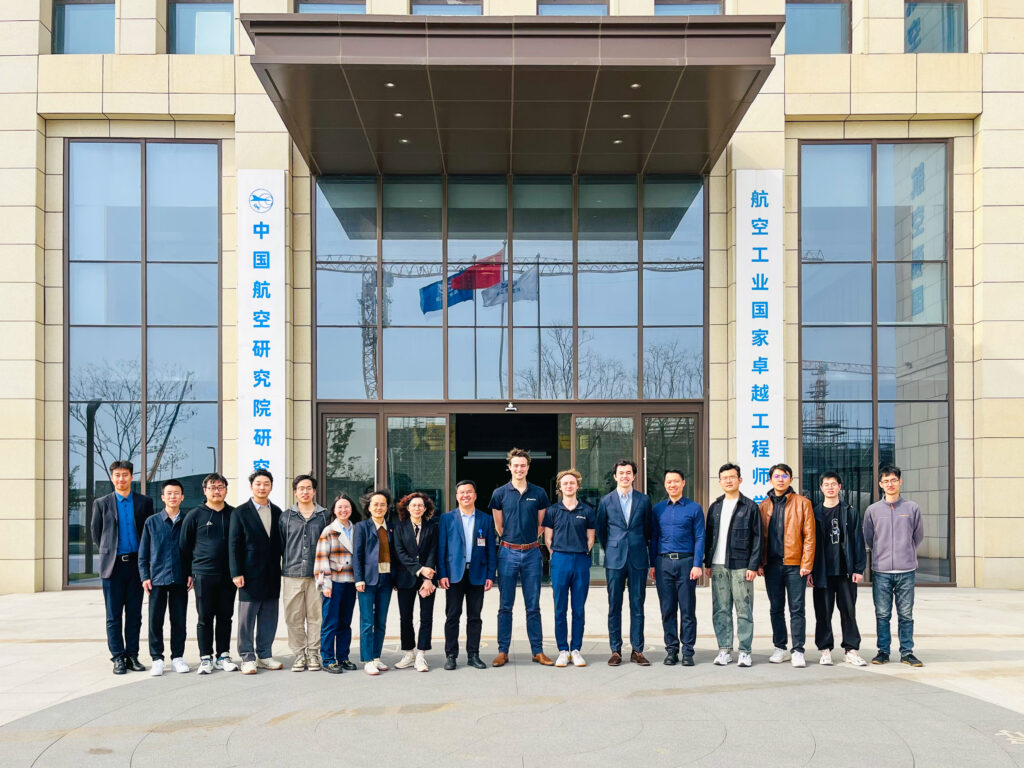
Both China and the Netherlands have much to offer each other in the face of global energy and climate transition, creating new markets. Complementary expertise in Science, Technology, & Innovation opens-up possibilities for partnerships, and the ability to scale up can drive down costs, making the transition more accessible for all.
The active presence and support of the Netherlands Innovation Network underscores the ambition and dedication of the Netherlands to achieve carbon neutrality by 2050.
